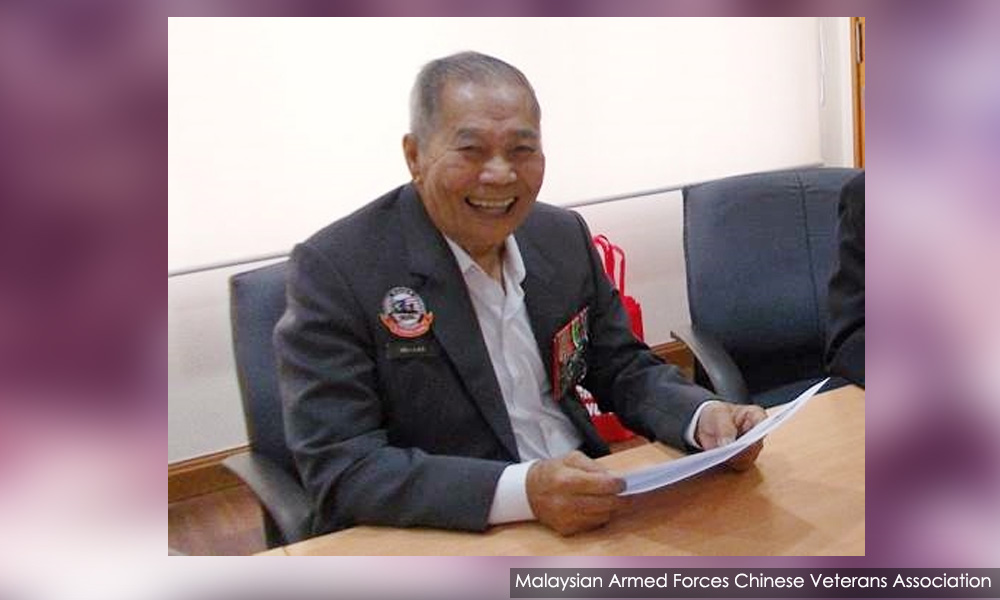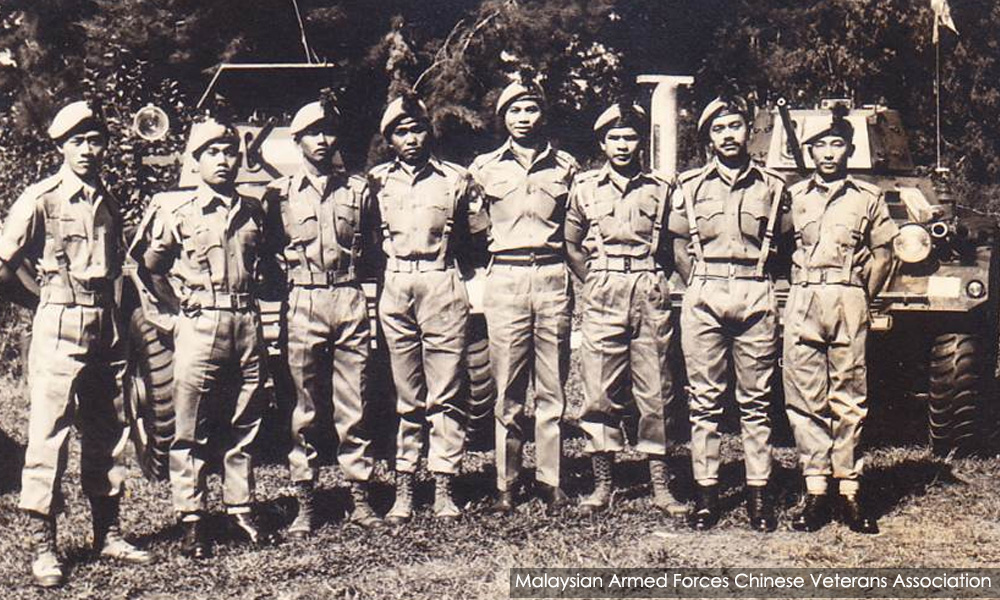
I witnessed the Second Malayan Emergency while I was a young medical officer attached to the battalion at the frontlines. I saw how the servicemen, of different ethnic backgrounds and religions, had fallen in action, or were badly injured by gunfire or booby traps. They all contributed gallantly to the defence of the nation.
– Brig Gen Dr Leong Weng Foon (foreword) Memoirs of the Malaysian Armed Forces Veterans.
The Malaysian Armed Forces Chinese Veterans Association (Macva) has, with Memoirs of the Malaysian Armed Forces Veterans, produced a book that is a fascinating exploration of what it means to serve the country. While this book could be viewed as a historical narrative of the ethnic Chinese community’s contribution to nation-building, it is much more than that, in the sense that through the narratives of these veterans, through the compilation of anecdote and historical fact, what we are witness to, is a community of diverse Malaysians, working towards a common goal.
Goals that very often meant life or death but could also be the simple camaraderie of participation in sporting events. This is a concise history of the various services pre- and post-independence and how the Chinese community from the very beginning was part of the formation of the military apparatus of this nation.
What Macva has done with this book is not only to highlight the role of Chinese veterans in nation-building but also through pictures, historical fact and biographies, demonstrated how Malays, Chinese, Indians and Orang Asal working with, at first colonial powers, and then with democratically elected governments that formed the basis of what we now consider the modern Malaysian armed forces. In other words, this is about us and not merely about a specific community. Chinese veterans are the vehicle in which we relate to a Malaysian narrative.
This is not a self-serving compilation but rather a compilation of service to the nation. Reading this book – and if I had my way, this would be in every classroom in the country – we begin to understand how Malaysians of different ethnicity and religions worked towards a common goal through various turbulent political eras.
Kudos to the editorial team for structuring the book in a way which the casual reader can digest information based on what he or she finds interesting.
To give the reader an idea of the scope of this book, it covers everything from the military before and after Merdeka, including the Malayan Emergency, Confrontation, counter-insurgency warfare, the Royal Malaysian Navy, the Royal Malaysian Air Force, peacekeeping missions, civil support, awards for bravery, unsung heroes, outstanding achievements and of course, sports.
For instance, this old sailor is extremely interested in foreign operations, especially peacekeeping international initiatives and the armed forces' role. I will highlight two narratives which demonstrated how the armed forces operate in the homeland and abroad.
The book has an excellent chapter on our involvement in peacekeeping activities in the Congo. Do not worry. The editorial team did a wonderful job of explaining the Congo “situation” and our role as part of the international peacekeeping force.

The Elisabethville incident highlights the professionalism of Major Lee Ah Pow (photo). Lee is an interesting character because as a lieutenant at the time, he turned down a course in England and opted for deployment in the Congo, even though he was advised that he would lose an opportunity for promotion to captain.
His professionalism is demonstrated in a firefight with Katangese soldiers – the specifics of which need not be elaborated in a book review – but what is important was that his high degrees of discipline in the face of the enemy earned him a Panglima Gagah Berani (PGB) award.
Here is an extract from a citation from Brigadier RS Noronha of the Indian Independent Brigade Group: "With undaunted courage and high quality of leadership, he controlled his men from opening fire until the enemy opened fire first on the patrol. For this gallantry and the correct execution of orders and a high degree of discipline displayed in the face of the enemy, Lieutenant (Lt) Lee Ah Pow has set a glowing example of leadership against overwhelming odds in the eyes of the enemy and the Gurkha Rifles (FF) patrol."
Did I forget to mention that before the firefight started the Katangese soldiers were shouting “Malaya apano bolozi” (Malaya no good) and Lee, who was about to mount his vehicle, was fired upon, with the shot barely grazing his left ear? When the Katangese soldiers were retreating, he ordered his men to cease firing because they were on a peacekeeping mission.

Also, keep in mind that when Lee recounted the event he was worried that the Ferret scout cars posed a danger because there were jerry cans of gasoline mounted on them which could easily catch fire. He told his men that if they were to die, they should take some of the enemies with them. This is what happens in a firefight, and what is always needed are leaders whose professionalism tempers their ruthlessness in battle.
Or how about the rescue mission in the homeland? This one was a little bit tricky because it involved elephants. With the construction of the Kenyir hydroelectric dam, a herd of elephants was stranded on an island the size of a football field. The Wildlife Department based in Temerloh reported the elephants had to be physically relocated to the mainland reserve.
The Malaysian Army Royal Engineer Regiment was assigned this rescue mission. The two main protagonists in this scenario were Lt Adenan and Lt Ng Thim Fook, the troop officer. Ng had a free hand in the entire rescue operation where a raft was build and the elephants were ferried to safe ground.
From the book, it must be pointed out that while rafting took place, there was always the constant danger of rampage by these animals, even though they were tranquilised. It would be a disaster if this had happened. The other point of interest was that even trained elephants showed signs of stress and they plainly refused to work at times. This was a challenging task to the mahouts, as well as the engineers who manned the raft.

It was a very successful operation which took two months to complete. Thirteen wild elephants were saved. Adenan and Ng were bestowed the Pingat Jasa Kerajaan medal by the state of Terengganu.
The book ends with a chapter about the future of the military. It is merely a page long. The cogent point I present here is that “esprit de corp” should be reviewed. While injecting certain religious values into the military, a fair and transparent attitude making the army secular and dynamic should be the goal. It should remain an independent, impartial, and loyal institution in protecting the country from all threats.
Most importantly, men and women at the forefront giving their youth and life to a country should not be distinguished by East Malaysian or West Malaysian, bumiputera or non-bumiputera. Our fate lies together.
It is a fitting way to end a book which is unapologetic in promoting national unity and service to the country. For this old sailor, reading the narratives, looking at the pictures and seeing those young men serve their country through turbulent times, some of whom have passed away, killed in action and suffered the vagaries of conflict in mind and body, what comes to mind is that axiomatic John F Kennedy quote:
"Our most basic common link is that we all inhabit this planet. We all breathe the same air. We all cherish our children's future. And we are all mortal."
S THAYAPARAN is Commander (Rtd) of the Royal Malaysian Navy. A retired barrister-at-law, he is one of the founding members of Persatuan Patriot Kebangsaan. - Mkini


No comments:
Post a Comment
Note: Only a member of this blog may post a comment.